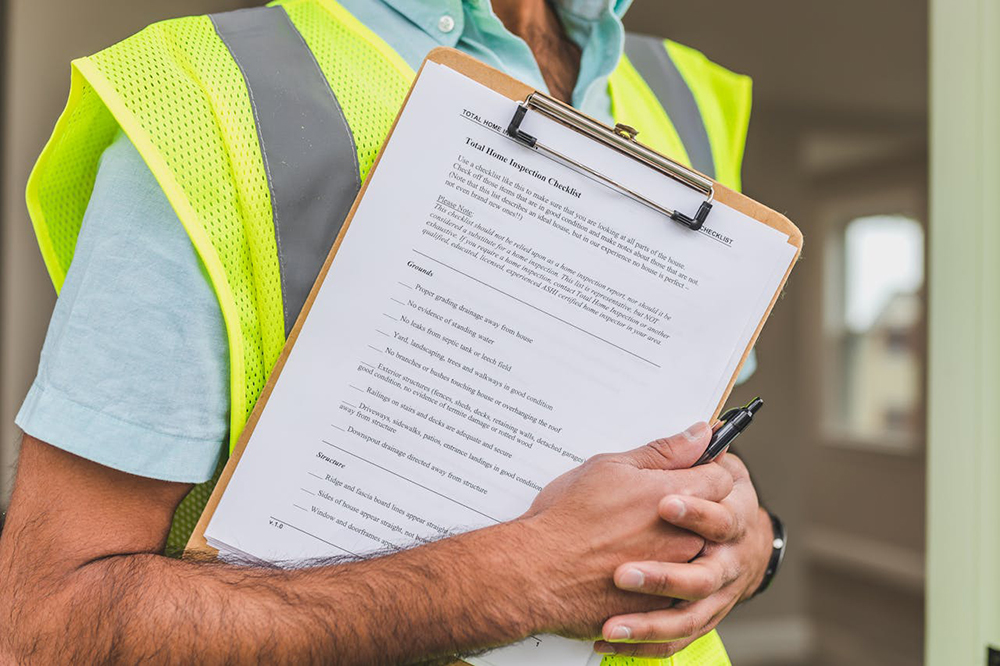How Weather and Environmental Factors Impact Home Inspections in Different Regions

Home inspections in different regions are crucial in home-buying, ensuring that properties are safe and structurally sound. However, weather and environmental factors can significantly influence these inspections, presenting unique challenges, particularly if you’re moving overseas to an unfamiliar location. Understanding these influences is vital for home inspectors and prospective buyers to make informed decisions.
Temperature Extremes
Extreme temperatures, whether hot or cold, can affect various aspects of a home inspection. In colder regions, freezing temperatures may lead to issues like frozen pipes or inadequate insulation. On the other hand, in hotter areas, excessive heat can exacerbate issues such as air conditioning malfunctions or roof damage due to thermal expansion.
Humidity Levels
High humidity levels can promote mold and mildew growth, particularly in regions with warm climates or near bodies of water. So, home inspectors must carefully assess moisture levels in basements, crawl spaces, and bathrooms to identify potential mold problems and ensure proper ventilation to mitigate future issues.
Rain and Flooding
Heavy rainfall and flooding pose significant risks to homes, especially in low-lying areas or regions prone to storms. Inspectors must check for signs of water damage, such as water stains, dampness, or weakened foundations, and recommend appropriate drainage solutions or waterproofing measures to prevent further damage.
However, you should still prepare for the worst-case scenario. For instance, if your home floods, you should have the number of an experienced moving company on speed dial. Logicstics.com is a great choice because this international moving and logistics company can come in, quickly pack your precious belongings, and store them for you until you solve the issue. Thus, you won’t have to worry about your valuables suffering water damage.

Wind and Storm Damage
Strong winds and severe storms can cause extensive damage to roofs, siding, windows, and other exterior components of a home. Thus, inspectors need to assess the integrity of these structures, looking for loose shingles, cracks, or signs of water penetration that may compromise the home's safety and durability.
Soil Conditions
Soil conditions can greatly impact home inspections in different regions. Specifically, the type and condition of soil can impact the stability of a home's foundation, particularly in regions with expansive clay soils or areas prone to earthquakes. Inspectors should evaluate the foundation for signs of settlement, cracking, or shifting, which may require professional repair or reinforcement to ensure structural integrity.
Vegetation and Landscaping
Overgrown vegetation or poorly maintained landscaping can conceal potential issues with a home's exterior, such as hidden damage or pest infestations. Therefore, inspectors must assess the proximity of trees, shrubs, and other vegetation to the house and recommend trimming or removal to prevent damage and improve ventilation.
Coastal Concerns
Homes located in coastal areas face unique challenges due to saltwater exposure, erosion, and the risk of hurricanes or tropical storms. Inspectors should pay close attention to corrosion on metal components, coastal erosion patterns, and adherence to building codes for hurricane resistance to ensure the home's resilience against coastal hazards.

Urban vs. Rural Considerations
The environmental impact of urban versus rural settings can also influence home inspections. Urban areas may have higher pollution levels, noise pollution, or proximity to industrial sites, while rural properties may face challenges such as water contamination, septic system issues, or wildlife intrusion.
Seasonal Variations
Finally, seasonal changes can affect the frequency and severity of certain inspection issues. For example, winter inspections focus on heating systems and insulation, while spring assessments prioritize landscaping and drainage. Understanding these seasonal variations helps inspectors tailor their assessments to address specific concerns throughout the year.
Considering Historical Weather Patterns
Another important aspect of assessing weather and environmental factors in home inspections is considering historical weather patterns. By analyzing past weather data for a specific region, inspectors can anticipate recurring issues and trends that may affect the condition of homes in that area. For example, areas prone to heavy snowfall may experience more frequent roof damage or ice damming during winter months. Similarly, regions with a history of drought may have increased risks of foundation settling or soil shrinkage.
Home Inspections in Different Regions: Impact of Air Quality
Air quality can also influence home inspections, particularly in regions with high levels of pollution or environmental contaminants. Poor air quality can affect indoor air circulation, contribute to health issues, and accelerate wear and tear on HVAC systems. Inspectors should assess air filtration systems, check for signs of mold or allergens, and recommend air quality improvement measures such as ventilation upgrades or air purifiers to ensure a healthy living environment for occupants.
Adapting Inspection Techniques
Home inspectors must adapt their techniques and approaches based on each region's specific weather and environmental conditions. Inspectors may use specialized equipment like moisture meters, infrared cameras, or seismic sensors to detect hidden issues or structural weaknesses. Additionally, they should stay updated on local building codes, zoning regulations, and environmental guidelines. That ensures they provide comprehensive assessments and recommendations tailored to each area's unique challenges. Inspectors can better serve their clients and contribute to safer, more resilient homes in diverse geographic settings by staying flexible and informed.

Transitioning to Your New Home
After a successful home inspection, the next step for buyers is the exciting relocation process. This phase involves careful planning and coordination to ensure a smooth transition to your new residence, especially if you’re moving from the USA overseas. First, you should gather quality moving supplies, like sturdy moving boxes and lots of bubble wrap, to safely pack your belongings. However, you should hire professional packing and crating services for your peace of mind. Next, research and hire an international moving company with stellar customer reviews that can handle an international relocation's complex logistics. With proper preparation and assistance, relocating to your new home can be a seamless and enjoyable experience, marking the beginning of an exciting chapter in your life.
Conclusion
Weather and environmental factors play significant roles in home inspections in different regions. By considering these influences, inspectors can identify potential issues more effectively and provide valuable insights to homebuyers. Ultimately, staying informed about local climate patterns and environmental risks is essential for ensuring residential properties' safety, durability, and overall quality.
https://www.pexels.com/photo/landscape-photography-of-field-with-wind-mill-with-rainbow-1253748/
https://www.pexels.com/photo/water-dew-in-clear-glass-panel-125510/
https://www.pexels.com/photo/assorted-color-houses-beside-body-of-water-632522/